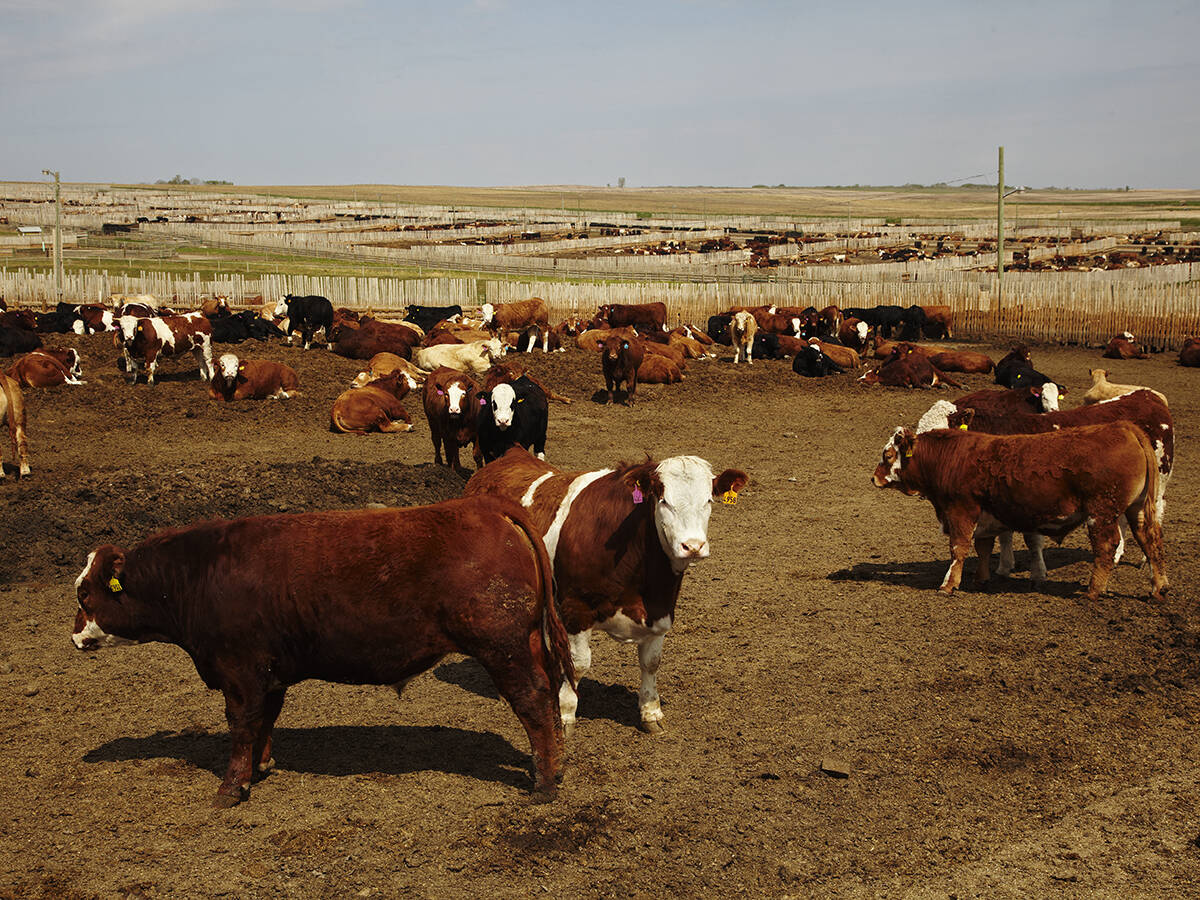This cattle market information is selected from the weekly report from Canfax, a division of the Canadian Cattlemen’s Association. More market information, analysis and statistics are available by becoming a Canfax subscriber by calling 403-275-5110 or at www.canfax.ca.
Fed prices stable
Since late July, western Canadian fed cattle prices have been stuck in a $5 per hundredweight trading range ($230-$235 per cwt). Last week all three western Canadian packers bought cattle. Dressed sales were reported from $390-$391 per cwt. delivered.
Read Also

Canfax cattle market report – November 13, 2025
The Canfax cattle market report for November 13, 2025. Fed & feeder cattle prices, butcher cow trends, and cutout market insights.
Western Canadian steer carcass weights continue to seasonally increase. They are now 17 pounds shy of record highs (973 lb.) set last year. Seasonally, carcass weights usually don’t peak until late October-early November. With cheaper barley prices compared to last year and a premium being priced into the futures market, this is contributing to larger out weights.
Active trade was reported in Ontario with dressed sales at $395 per cwt. delivered, fully steady with the previous week. Light volumes of Ontario fed cattle were marketed into the United States. Sales to the U.S. were at a premium over local deals.
In the U.S., trade was scattered. Dressed sales in Iowa and Nebraska ranged from US$288-$292 per cwt., $2 per cwt. lower than the previous week. Live sales in Nebraska were $182-$184, while sales in Texas and Kansas were from $181-$182 per cwt., $1-$2 per cwt. lower.
Last week’s cattle slaughter was estimated at 628,000 head. For the start of October, this is the smallest slaughter since 2016. U.S. beef exports for August were 21 percent lower than last year, the 10th consecutive month that exports have been below last year.
In August, less beef was shipped to South Korea (-23 percent), Japan (-20 percent) and China (-39 percent). Monthly beef imports were 24 percent larger than last year.
Beef imports from Australia were the largest seen this year.
Cow price steady
Despite ample offerings, non-fed prices stabilized last week, with good buying interest on both sides of the border. Alberta slaughter cows traded generally steady with the previous week.
D2 and D3 cows averaged $130.61 per cwt. and $118.22 per cwt., respectively. Dressed cow bids trended sideways from $250-$260 per cwt. delivered. Butcher bull prices stayed the course, averaging $157 per cwt.
Western Canadian non-fed slaughter for the week ending Sept. 30 was eight percent larger than the previous week at 7,452 head, and year to date was nine percent larger, totalling 281,182 head. Ample supplies are anticipated, and slaughter cow prices typically bottom in November.
High retail prices will continue to push consumers to the ground beef section, and U.S. buying interest is supportive.
Feeders lose momentum
Alberta feeders have lost forward market momentum, and prices softened on seasonally ample offerings and deteriorating feeding margins. Light calves less than 400 lb. were the exception, trading steady to $2.50 per cwt. stronger, while 500-700 lb. calves saw a significant price decline.
Middle weight 500-600 lb. Saskatchewan steer calf prices were the strongest in Canada last week at a $7 per cwt. premium to Alberta. Same weight Manitoba steer calves were at parity with Alberta, and Ontario prices were the lowest by a significant margin.
Feeders heavier than 700 lb. traded unevenly softer with steers easing $1-$2 per cwt. lower and similar weight heifers sliding $5.50-$6 per cwt. lower.
Weekly Alberta auction volumes were 10 percent larger than the previous week at 55,381 head and were 16 percent larger than the same week last year. Year-to-date auction volumes are 18 percent larger than a year ago, totalling 1,193,822 head.
A large volume of feeders was offered on electronic sales last week, with premiums over spot for deferred delivery.
Canadian feeder exports to the U.S. for the week ending Sept. 23 were down 20 percent from the previous week at 4,026 head and were 104 percent larger the same week last year. Year to date, feeder exports were 26 percent lower than a year ago, totalling 122,641 head.
Alberta fall auction volumes typically peak around the first week of November, but deteriorated pasture conditions have pulled some feeders and slaughter cows to market ahead of schedule. Auction offerings are expected to build modestly larger through October.
Cutouts take a dip
In U.S. beef trade, cutouts continued to follow seasonal patterns and were down one percent. Choice cutouts dipped below US$300 per cwt., closing at $297.76. Select cutouts closed at $274.77 per cwt.














